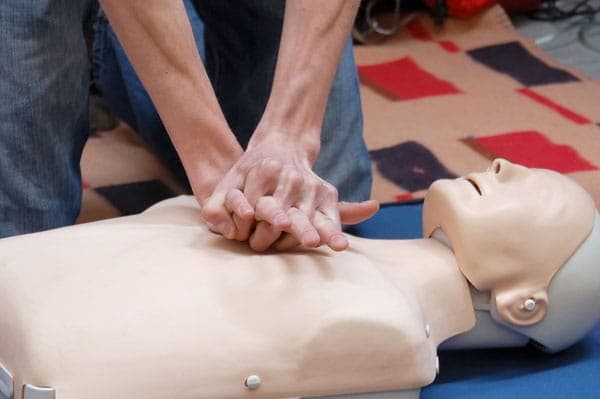The Latest AHA CPR Guidelines Updates

The International Liaison Committee on Resuscitation also known as ILCOR is a worldwide forum for resuscitation organizations to work together and communicate on refining & developing CPR training and ECC guidelines. Members of ILCOR include: The American Heart Association (AHA) and other well known organizations from New Zealand, Canada, Australia and Africa.
Here are some of the latest guideline updates from ILCOR, related to CPR & cardiovascular care. This guidance will give helpful insight for people who have previously had CPR training or are planning to have CPR training. These guidelines and protocol supersede any previous CPR guidelines.
Emergency dispatchers must provide CPR instructions.
The latest guidelines emphasize quick identification of a viable cardiac arrest scenario and immediate CPR instructions. Dispatchers can assume if a person is unconscious and breathing abnormally (agonal breathing) or not breathing at all, that cardiac arrest is the cause. It is recommended that all 911 dispatchers are trained and prepared to recognize the signs of cardiac arrest and give instructions on CPR over the phone to the caller.
CPR compressions should be a certain depth and rate.
Studies have shown that CPR most commonly fails because compressions aren’t deep or fast enough. Guidelines by ILCOR tells us that there’s an upper limit in which compressions too fast reduce the return of spontaneous circulation. Similarly, there’s a limitation for the depth of compressions too.
The updated CPR guidelines are as follows:
- Adult victims should be given compressions at rate of 100 to 120 per minute.
- Compression depth should be between 5-6 centimeters or 2-2.4 inches (or 1/3 the depth of the chest for children and infants).
- After the onset of cardiac arrest, CPR should be delivered as soon as possible.
High-fidelity CPR training should also now provide feedback to students on the depth of their compressions. Nowadays, there are devices available that helps to evaluate compression depth when a rescuer is giving CPR to a patient. These devices can be used during CPR training and on real patients. You can view the latest CPR manikins with built in feedback devices here.
There should be chest recoil after every compression.
Rescuers should make sure to lift their weight off the victim for a split-second between compressions and allow the victims chest to fully recoil. Allowing for full recoil gives the heart time to fully refill with blood.
New recommendations for CPR training.
ILCOR provides guidelines for CPR training of both lay rescuers & medical professionals. This involves the use of high-fidelity manikins for advanced life support training along with the use of CPR feedback devices to evaluate manual compressions. Read about the difference in high fidelity manikins here.
Resuscitation practice should be more frequent.
The guidelines also proposed that the two-year recertification time is very long & ACLS (Advanced Cardiac Life Support) and BLS (Basic Life Support) certifications should require more successive training. Although certifications will still be good for two years, it is recommended to brush up on skills and knowledge regularly. Studies show students retention rates begins to decay within the first year.
The International Liaison Committee on Resuscitation also tells us that self-instruction is also an effective method to learn CPR, and these opportunities should increase to improve the number of trained lay rescuers. You can read about online CPR education options here.


